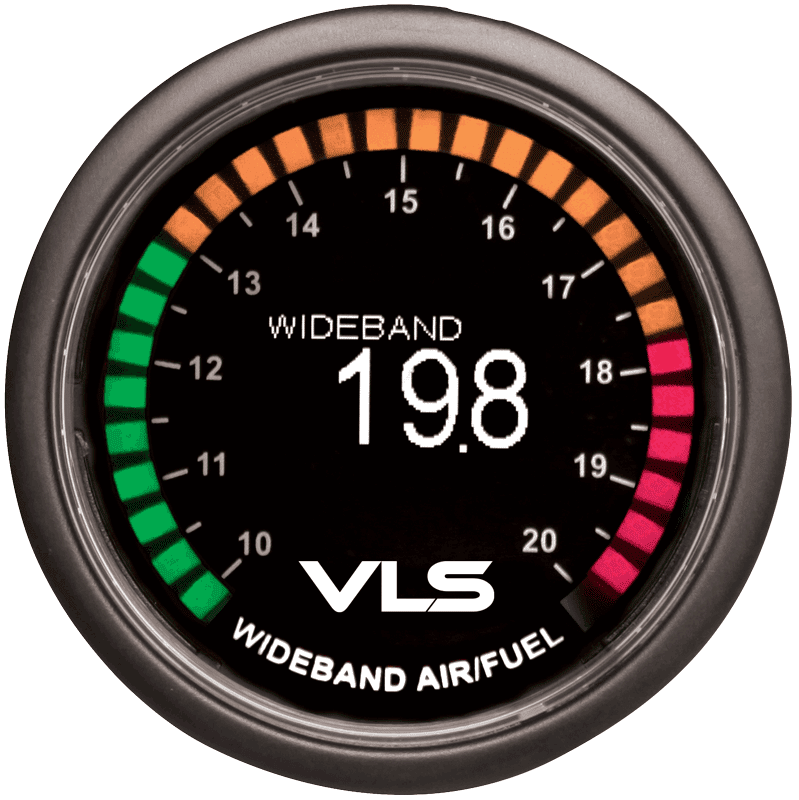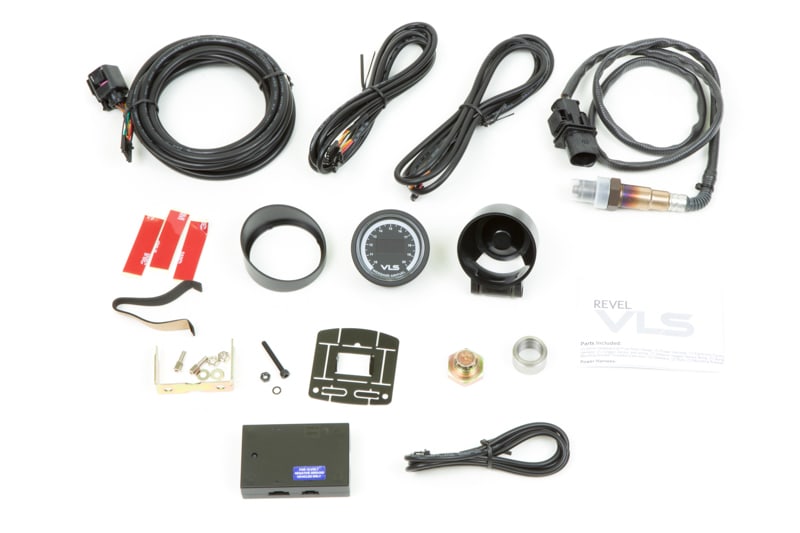VLS Wideband A/F Ratio OLED Gauge
Part #: 1TR1AA005R

MSRP: $318.00
- 52mm diameter gauge (2 1/16 in.)
- 10.0:1 to 20.0:1 AFR reading
- Bosch 4.9 LSU sensor
- Digital OLED display
- 30 LED outer ring
- Analog output wire harness included
- Mounting kit included
The Revel VLS Wideband A/F Ratio gauge utilizes the best in sensor technology with the included BOSCH LSU 4.9 oxygen content and Lambda value sensor. While many aftermarket wideband gauges are still operating on the older, less accurate sensor, OE manufacturers and Revel VLS have made the switch to LSU 4.9, the new standard. Compatible with gasoline and E85.
*The Revel VLS Wideband A/F gauge is not daisy-chain compatible.

BOSCH 4.9 LSU Sensor
Included with the Revel VLS Wideband A/F Ratio gauge is the BOSCH 4.9 LSU Sensor for the most accurate readings. This sensor is longer lasting and is accurate to 0.1 AFR reading and does not require to be free-air calibrated upon initial setup* (however it will still need further recalibration based on altitude changes and general sensor wear in order to ensure accuracy). This is a major improvement over the previous LSU 4.2 sensor.
The kit also includes the weld-in bung that is required for the installation of the sensor.

OLED Screen
Maximum comfort is attained by the use of an OLED (Organic Light Emitting Diode) numerical display. When compared to a traditional LCD display, the OLED display provides sharper contrast resulting in a deeper black for a crisp, clear images that is easier to read at a glance. The technology also allows for undistorted viewing angles approaching 170 degrees. The OLED display also does not require a backlight to be clearly visible at night, which gives the slim profile of the gauge — perfect for mounting in areas where space is an issue.

Parts Included
All Revel VLS gauges include the necessary hardware, sensors, and universal mounting pod and hood, as well as the installation instructions:
- (1) Wideband Air/Fuel Ratio Gauge 52mm (2 1/16 in.)
- (1) Power Harness
- (1) Electronic Control Unit
- (1) Gauge Signal Harness (Control Unit to Gauge)
- (1) Analog Output Harness
- (1) Oxygen Sensor and wiring
- (1) Weld-In Oxygen Sensor Bung
- (1) Bung Plug
- (1) Mounting Pod
- (1) Sun Shade (hood)
- (1) 3M double sided tape
- (2) Mounting Bracket Threaded Extension
- (2) Washers
- (2) Nuts
- (1) Mounting Bracket


